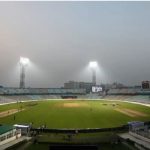As heavy rains continue to batter Mumbai, the water levels in the city’s seven key lakes have seen a significant increase. The combined stock of these lakes rose by five percentage points in the past 24 hours, reaching 47.29% of their total capacity by Monday morning.
A senior official from the Brihanmumbai Municipal Corporation (BMC) noted that although a 10% water cut is currently in effect, the civic body will review this decision on Tuesday due to the gradual rise in lake levels.
Sunday’s torrential downpours led to a notable increase in lake water, with the levels touching 47.29%—equivalent to 6.84 lakh million litres —by Monday morning. Despite this improvement, lake levels are still at a three-year low, down from 47.54% on the same day in 2023. In comparison, lake levels were at a robust 88% during this period in 2022.
The BMC’s hydraulic department is set to evaluate the situation on Tuesday. “We have experienced substantial rainfall since early July, and over the past 20 days, lake levels have risen by more than 40%. We will meet with the municipal commissioner to assess whether to adjust the water cut,” the official said.
Since June 5, Mumbai has been facing a 10% reduction in water supply. However, the BMC official emphasized that there is still a considerable way to go before the city’s water needs are fully met. “Mumbai typically receives its heaviest rainfall in July, so we anticipate a significant rise in lake levels this month. Ideally, by August 15, lake levels should reach at least 80% to ensure a stable water supply until next year,” he added.
The city’s water supply comes from seven lakes: Tulsi, Vihar, Bhatsa, Modak Sagar, Tansa, Upper Vaitarna, and Middle Vaitarna. During the monsoon, these lakes fill up, and their water is distributed through an extensive pipeline network throughout the year.
In the 24 hours ending at 8:30 am, rainfall data showed the following accumulations: Tulsi Lake received 171 mm, Vihar 133 mm, Vaitarna 88 mm, Bhatsa 77 mm, Middle Vaitarna 62 mm, Upper Vaitarna 52 mm, and Tansa 50 mm.
Sunil Kamble, Director of the IMD in Mumbai, informed The Indian Express that as of Sunday, Mumbai has experienced over 300 mm of excess rainfall. This is due to favorable weather conditions, including an offshore trough, a low-pressure area near the Bay of Bengal, and a shear zone, all contributing to consistent and beneficial rainfall across the region.
Tulsi Lake, the smallest of the seven, began overflowing on the morning of July 20. With a live storage capacity of 8,046 million litres, it provides 18 million litres of water to Mumbai each day.






